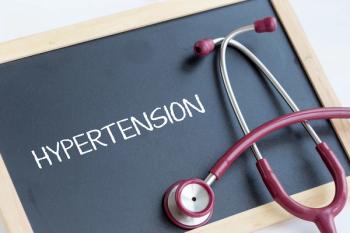
The Effects of Myeloproliferative Neoplasm Symptoms on Quality of Life
A secondary analysis presented at the 59th Annual Meeting of the American Society of Hematology found that all individual symptoms of myeloproliferative neoplasms correlate with quality of life (QoL), and having either 1 severe symptom or having multiple symptoms of moderate intensity was meaningfully correlated with QoL reduction.
A
“Patients with MPNs are faced with high disease-related symptom burden and QoL decrements,” wrote the authors.
Previous study results have shown that symptom burden measured from the MPN Symptom Assessment Form (MPN-SAF) Total Symptom Score has a strong correlation with QoL measured by the Global Health Status/QoL (GHS/QoL) scale of the European Organization for Research and Treatment of Cancer Quality of Life Questionnaire Core 30 (EORTC QLQ-C30). However, according to the authors, an analysis of predictors of QoL in this population has not been performed.
The authors utilized data from the previously enrolled cohort of 1422 patients with MPNs who completed a MPN-SAF and EORTC QLQ-C30. The association between individual symptoms and QoL was assessed by the GHS/QoL scale of the EORTC QLQ-C30.
Two sets of summary measures were then established: the presence of at least 1 symptom with a score of 1 or higher, presence of at least 1 symptom with a score of 2 or higher, and so on up to a score of 10; and total number of symptoms with a score of 1 or higher, total number of symptoms with a score of 2 or higher, and so on up to a score of 10.
The median correlation between individual symptoms and QoL was -0.36 (range -0.23, -0.54, all P <.001). The symptoms that yielded the strongest correlations were inactivity (-0.54, P <.001), fatigue (-0.48, P <.001), depression (-0.48, P <.001), and dizziness (-0.44, P <.001). The symptoms that yielded the weakest correlations were fever (-0.23, P <.001), cough (-0.27, P <.001), night sweats (-0.27, P <.001), and sexual desire/function (-0.30, P <.001).
Results also showed that the median correlation between QoL and the presence of at least 1 symptom with a score of 1-10 was -0.36 (range -0.20, -0.40). The strongest correlations were seen from the presence of: at least 1 symptom at or above a score of 6 (-0.40 , P <.001), a score of 7 (-0.39, P <.001), and a score of 8 (-0.38, P <.001). The weakest correlations were seen from a score of 1 (-0.20, P <.001), a score of 2 (-0.27, P <.001), and a score of 10 (-.29, P <.001).
While study findings suggest that all individual symptoms correlate to a certain extent with QoL, inactivity was the most correlated; having 1 severe symptom and having multiple symptoms of moderate intensity were meaningfully correlated with QoL reduction.
“The symptom burden experience is variable and undoubtedly bears heavily on quality of life among patients with MPNs as supported by these results,” concluded the authors.
The meeting takes place from December 9-12, 2017.
Newsletter
Stay ahead of policy, cost, and value—subscribe to AJMC for expert insights at the intersection of clinical care and health economics.














































